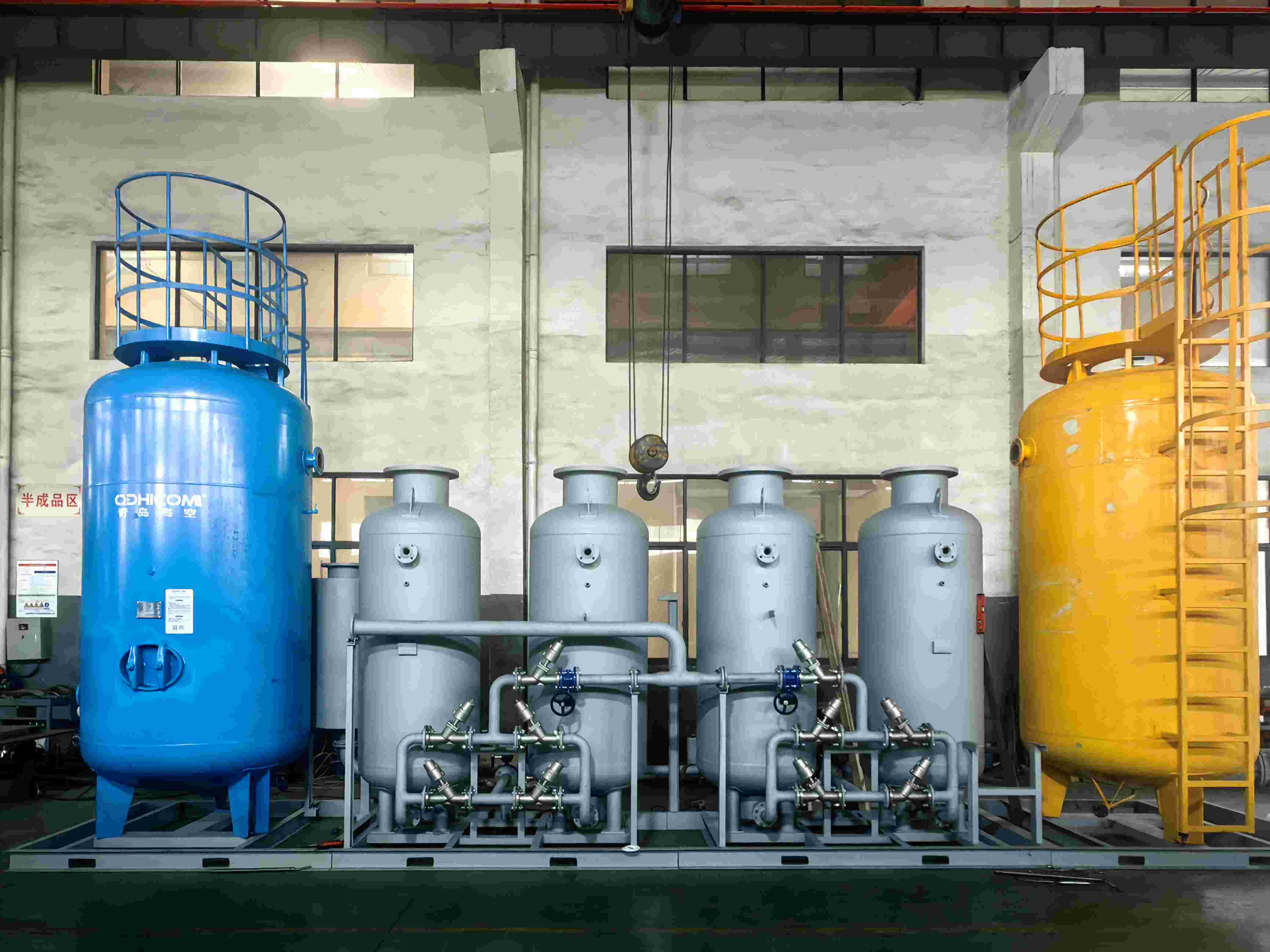Four-tower PSA Nitrogen Generator VS Two-tower PSA Nitrogen Generator: Which is your 'nitrogen' steady choice?
Four-tower PSA nitrogen generator VS two-tower PSA nitrogen generator: which one is your "nitrogen" choice?

In the field of industrial gas production, PSA nitrogen generators have become the choice of many enterprises due to their efficient and convenient features. When four-tower and two-tower PSA nitrogen generators are "evenly matched" in performance, a little-known difference can determine their "application scope" - equipment height and ground pressure. This difference allows them to show unique adaptability advantages in different installation environments.
Structural Design: Tower Layout Determines Height Difference
Two-tower PSA nitrogen generators adopt the classic dual-tower alternating working mode. To ensure stable operation of adsorption and regeneration processes, the tower bodies usually require a higher vertical spatial arrangement, resulting in a relatively higher overall machine height. In contrast, four-tower PSA nitrogen generators optimize the tower arrangement and working process, combining the four tower bodies in a more compact manner. This design not only does not affect their nitrogen production performance but significantly reduces the overall height of the equipment, making it more flexible in terms of space occupation.
Pressure Comparison: The "Lightweight" Advantage of Four-Tower Models
In addition to height, the pressure exerted by the equipment on the ground is also a key consideration for installation site selection. Due to their taller tower bodies and relatively concentrated structure, two-tower nitrogen generators concentrate the equipment's weight on a smaller contact area, resulting in greater pressure on the ground. In some old factories, industrial buildings with limited floor bearing capacity, or special venues with strict requirements for ground pressure, the installation of two-tower nitrogen generators may be restricted, or even require additional ground reinforcement, increasing installation costs and construction difficulty.
Thanks to its low-profile and compact design, the four-tower PSA nitrogen generator distributes its weight more evenly on the ground, significantly reducing the pressure per unit area. This "lightweight" characteristic allows it to easily adapt to various installation environments with limited bearing capacity without complex ground modifications, greatly expanding the equipment's application scenarios.
Scenario Adaptation: Tailored Installation Wisdom
In urban industrial parks, many factory buildings have low internal ceiling heights due to planning restrictions or structural issues. In such cases, the four-tower PSA nitrogen generator, with its lower height, can be easily installed in these space-constrained factories, while the two-tower nitrogen generator might be rejected due to its "excessive height". For enterprises that need to install nitrogen generators on floors, such as multi-story production workshops in food processing companies, the low-pressure characteristic of the four-tower nitrogen generator allows it to operate safely and stably without extensive floor reinforcement, saving both installation costs and shortening construction periods.
Furthermore, in some demanding installation environments, such as small production workshops within cultural and creative parks converted from historical buildings, or emergency scenarios requiring rapid addition of nitrogen generation equipment in existing spaces, the height and pressure advantages of the four-tower PSA nitrogen generator become even more prominent, allowing it to quickly meet the nitrogen generation needs of enterprises.
The seemingly similar four-tower and two-tower PSA nitrogen generators, despite their performance similarities, have differences in equipment height and ground pressure that can affect their "placement". When your enterprise faces ceiling height limitations or floor load-bearing challenges, it's worth paying more attention to this crucial distinction. If you wish to learn about specific installation cases in different industries, or have other questions about nitrogen generators, feel free to leave a comment and discuss!
Other areas
Oil storage and pressurized pipeline cleaning and purging of oil and gas wells, nitrogen sealing, nitrogen displacement, solvent recovery.
Used for food preservation and grain storage, pest control, food drying and sterilization, quick freezing of food, etc.
Provide the necessary gas raw materials for the preparation of new energy materials, battery production, and create an inert gas environment.
Ensure the manufacturing of electronic components and the stable operation of equipment, providing gas support for maintenance, combustion assistance, cooling, and other aspects related to thermal power generation equipment.
Nitrogen generator: Prevents oxidation, inhibits bacterial growth, and produces odors in biopharmaceuticals, providing protection throughout the process. Oxygen generator: Provides an oxygen-rich environment.
When signs of fire occur in the goaf or other locations, nitrogen injection is needed for fire prevention. The nitrogen device is lowered into the mine. It is used for annealing protective gas and sintering.
Used in the aerospace composite field, providing the necessary inert atmosphere for the molding and reinforcement processes of large carbon fiber composite wings.
Provide protection for the safety of oil and gas reserves, prevent oxidation, nitrogen sealing, and ensure dust suppression, fire prevention, and nitrogen sealing for coal reserves.

